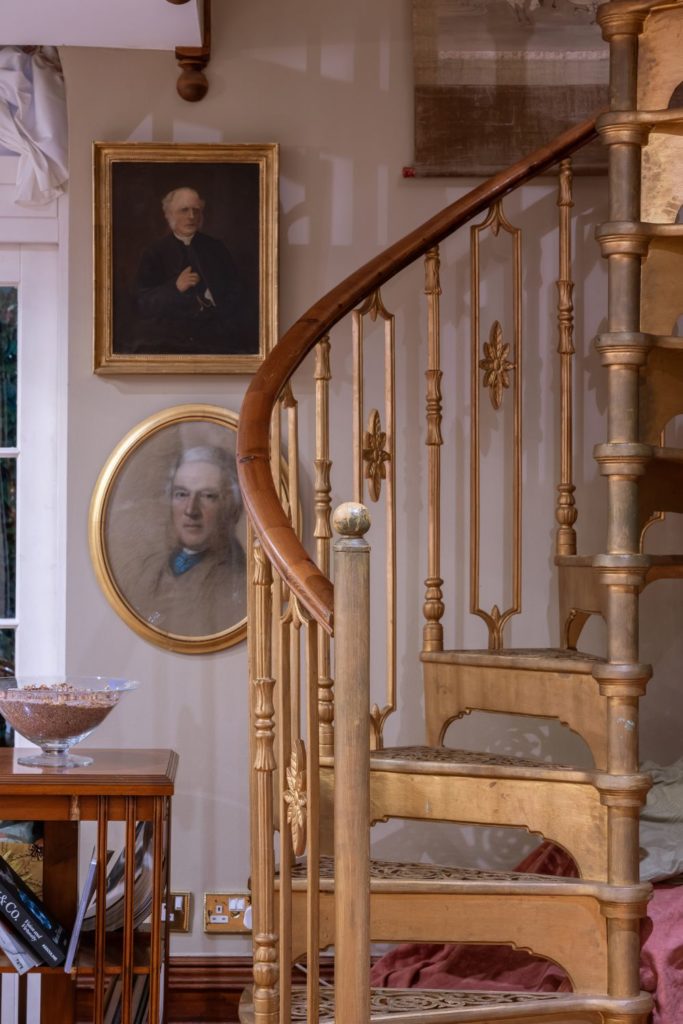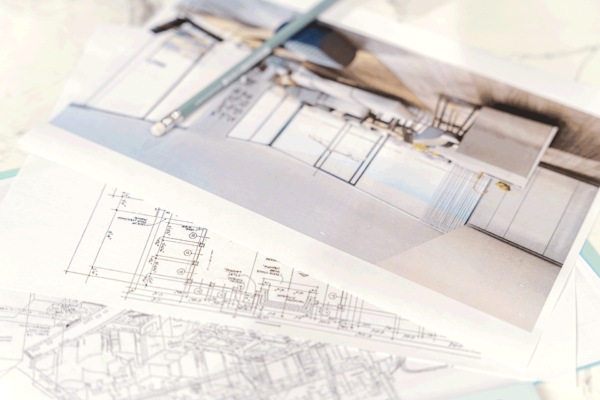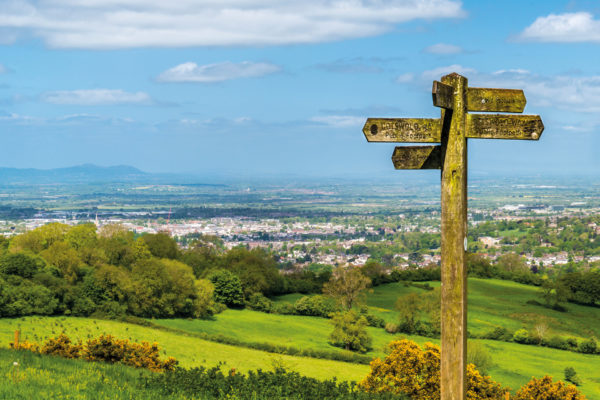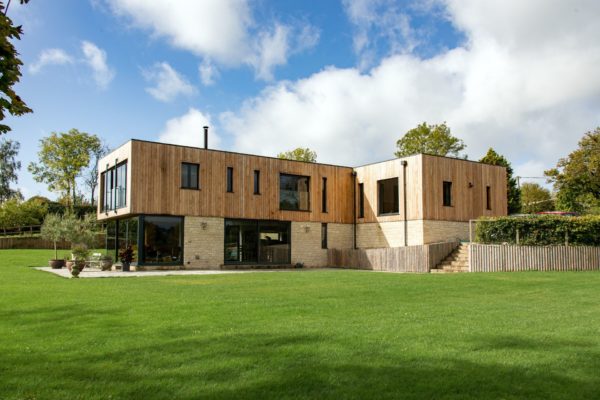How Can We Make The UK’s Listed Buildings Carbon Positive?
By
2 years ago
The challenge of future-proofing our historic homes
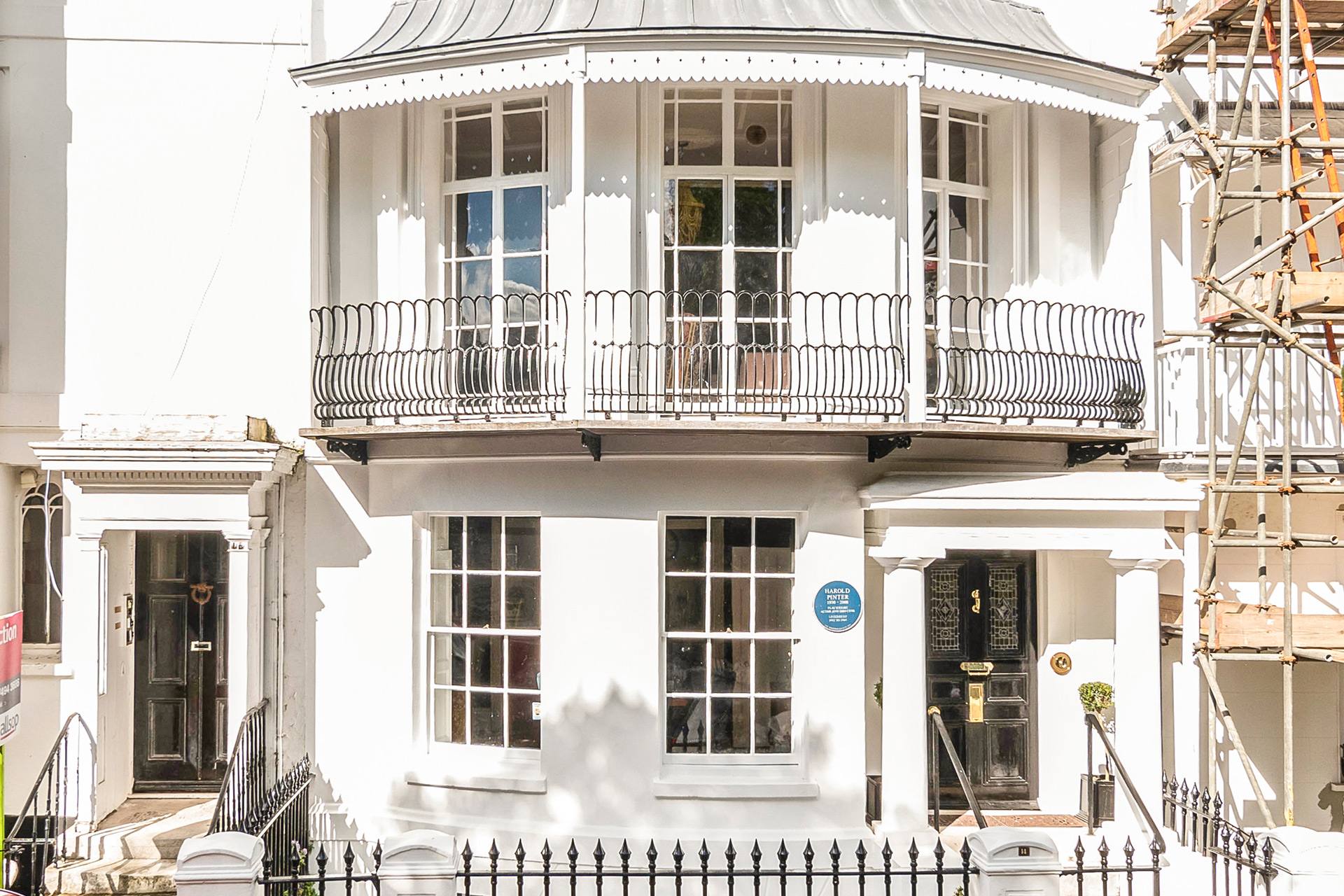
What does an eco-friendly property really look like? The idea of a sustainable home is most likely to conjure the image of a shiny new-build with EV charging stations, water-saving features or an array of energy-saving tech. Transforming older buildings into sustainable properties can feel like a much more daunting task – but Worthing-based developer Alex Coombes argues that even our most historic buildings can become eco homes. Alex has set himself the challenge of making a Grade II listed townhouse into a carbon positive home. Preserving the building’s illustrious history while implementing contemporary, energy efficient updates really has proved to be a challenge, Alex tells Martha Davies, but the technology required is already out there – it’s our own attitudes and fears surrounding carbon positive construction that may need to change.
Carbon Positive Construction: A Contentious Issue? – Interview

Image credit: Winkworth Worthing
Hi Alex! Can you tell us a little bit about the project you’re working on at the moment?
We own a Grade II listed townhouse in Worthing, and we’re seeking to reduce its carbon footprint and do some renovations. Part of the renovation is to make it low carbon in its approach.
Can you explain the concept of carbon positive building?
The idea is that it produces more energy than it takes in. I’ve done a lot of zero carbon building before, I’ve built Passivhaus structures, but from new buildings – that’s relatively easy to do. But this is an unusual property to do it with, as it’s a historically significant property. The objective in this project is to do things in a way where you will never notice them. And to preserve the house in the greatest possible manner, in the way that it is now, but at the same time make sure it has a higher degree of functionality. And this also gives the property more of a chance of being there in another couple of hundred years, as opposed to falling out of date.
What are the challenges of balancing this approach with the need to preserve historic listed buildings?
The technology is actually not particularly challenging at all. You can do a lot with the bits that are out there, and really most of the work in this project is about taking an outbuilding, a garage, and putting a lot of solar on it. We expanded the size of the garage and put a 15 kilowatt solar roof on it, which uses the closest visible material to black roof slate, so it blends in with the conservation area as much as possible. Since the roof is made of this solar material, as opposed to having retrofitted solar panels on top of it, it looks a bit slicker. And the idea is also to minimise energy loss in the winter, when the material is at 5 percent of its performance during the summertime. The proposal here is to put an enormous amount of solar onto it, and then to have three large batteries that will also deploy power when it’s needed.
So the focus is on the property generating as much electricity as possible?
That’s the critical phase here. And we generate more electricity than we would need to because we’re not changing things like windows, and we’re not putting huge amounts of external insulation on the property – we’re leaving that stuff intact because we want to leave the house itself as intact as possible. The idea is that it generates enough electricity from the things outside (like solar roofing) in order for us to have a sustainable home. So, really, the tech is pretty easy. The understanding is not too difficult, and the building isn’t a particularly difficult one to do it to, the main challenge here is planning, in terms of it being listed.
The two ways to approach a property is either to conserve energy through insulation and material improvements, or to make more energy to compensate for the inefficiencies of the house. Here the desire is to keep the house the same – the leaky windows and such are part of the property – so we choose the latter: to make tonnes of green energy near the house.
And how has that been going? What have you found?
That nobody really understands. There’s a huge disconnect between us saying that we want low carbon sustainable buildings and the ability to actually implement them. There’s a great deal of political leadership going into sustainability and discussing sustainability, but there’s virtually no policy about physically implementing it in properties – certainly in listed properties like ours.
Historic England is working on greater sustainable practices, but people don’t know quite where it’s going to land yet. We’ve seen bits on heat pumps, but local conservation officers are finding this uncharted territory. And things like the upcoming withdrawal of gas boilers are a huge concern in a lot of listed properties, because those properties don’t have the physical radiator capacity to put in air source heat pumps, and we’re going to require huge changes to be made in order for that to happen.
It’s pretty interesting watching it play out, because I thought that we’d have some supportive voices, and we’d have a conversation with people. But actually it’s been quite difficult to even have the discussion on many occasions. Certainly the changes at central government level are making it hard to see the direction for those who wish to decarbonise, but require the permission of local government officers.
So you’ve met quite a lot of resistance?
I think that from a planning perspective, sustainability doesn’t fit in with existing policies – some of the planning policies that we’re dealing with are 15 or 20 years old. And 15 or 20 years ago, we weren’t discussing any kind of climate change, it wasn’t significantly discussed – but our council has now declared a climate change emergency. And when we discuss this kind of decarbonisation project with them, we’re saying, well, our house is very hot in the summer and very cold in the winter because it’s so poorly insulated, and we let them know that we need some windows at the top of the townhouse, or some air ventilation at the top, to ventilate it better and make sure that, especially as the summers get hotter, there’s an opportunity to cool the house down without needing any kind of air conditioning. But the people we’re speaking to have no understanding of how that works or why that needs to happen, and there’s no policy or guidance for them, so they just say ‘no’.
Do you think it would be helpful if people were more informed about how to decarbonise listed buildings?
Massively. We’ve got so many listed buildings in the UK now that this is going to become prevalent – I don’t see how it isn’t. These homes use an amazing amount of energy because they are typically poorly insulated, and typically single glazed. And there’s charm in those things – it’s not like under any circumstances I want to see it replaced with something modern – it’s just that, if these properties are going to use a lot of energy, we have to find a sustainable way of producing that energy.
What’s the outlook of the project at the moment?
Pretty bleak. We’ve had a planning application in for around ten months now, and there isn’t really any movement on it from the council. There are a couple of small things that they might be able to do, but it was supposed to take six to eight weeks, and it’s taken far longer than that! We’ve had a meeting this week and the outcome is essentially that none of it can be supported by the council and the planning, and it will be refused. I was told that I should pick a more suitable house…
So it feels like a lot of admin?
Yes, absolutely. We started the project because we thought it was something that would be broadly welcomed; we didn’t think it was so contentious, I suppose. The funny thing is, I don’t think that the people who are objecting to it think that the concept is particularly contentious, I just think that they don’t know how to deal with it. And they would rather not see it implemented in a listed property; they would rather see it implemented in a new build. But even if we don’t live there, someone else is going to live in this house, and it’s still going to kick out a load of carbon when it doesn’t need to.
How do you think the process could be improved?
I think we need a wider understanding of what conservation is. I’ve done quite a lot of work on listed buildings, and conservation doesn’t have to simply mean replacing everything like for like. This house wouldn’t have had central heating 50 years ago, and now it’s got central heating, and it’s got a new roof on it. In the last few hundred years of its life, there have been contemporary upgrades , and this is just the next iteration of that – the next contemporary upgrade.
In terms of conservation, I think we have to make some pretty tough choices about where we put our energy and resources and have a discussion about why we’re doing it. We need some balance in this process so we can say, ‘well, we need to update certain policies and understand why these things need to change’. It’s about talking to people about it, talking to councils – as I say, the council in Worthing are really understanding when it comes to climate change, and they’ve declared this climate emergency, they’re out there doing things about it, but it doesn’t always feel like that for us. I understand why this is difficult, but we’ve got to start having difficult conversations about things or this isn’t going to work.
How are you feeling about the proposal after having gone through this process?
I have to say that it isn’t financially sensible to do what we’re proposing. When we started proposing it, energy was going up and up, and it was starting to look semi-sensible to do a lot of these things. But now it’s come back again and it’s almost certainly not cost efficient to carry out this proposal. It’s much more likely that this is going to cost more than it makes over its lifetime. But, ultimately, I think it’s a cool project. It’s an interesting thing to do. My wife and I both live and work here, and it’s where we want to live – it’s a town that we’ve invested lots of money into.
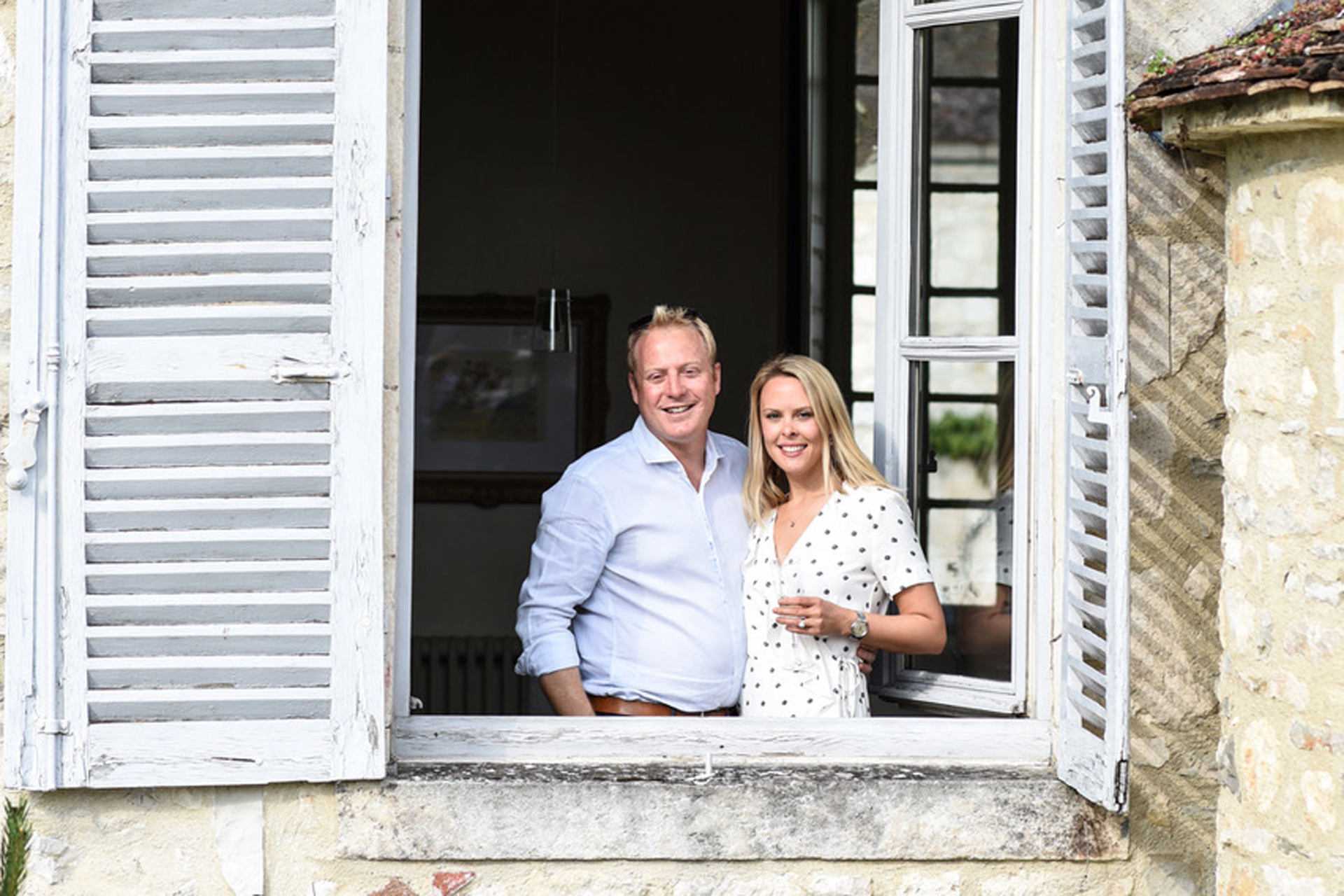
Alex and his wife, Dr Sarah Coombes
It seems like a very personal project.
It definitely is. Yeah, there’s no commercial interest here. We want to live there for a while, so it’s a sensible thing to do. But I think a lot of listed building owners would say that, with energy prices last winter, things felt pretty unmanageable, trying to bear the cost of heating. And the hardest thing is that the heating system in the townhouse at the moment is almost certainly detrimental to the preservation of the property. It just pumps out loads of energy to one corner of the room which just dissipates quickly out of the windows. It’s not the right solution if you want the house to last a long time.
So it’s all about future-proofing?
Yes, definitely. And we just like the house. We really like where we live, so it’s the right thing to do.
Do you think decarbonisation initiatives like the solar roof are initiatives you’d want to see in other properties? They sound very innovative!
I don’t think it’s actually as innovative as it sounds – it’s pretty commercially available. You can find it with Tesla, and Octopus energy has a similar system, too. The big thing here is that we generate tons of energy in the summer, pump that into the grid, and then in the winter we get it back from the grid. And in terms of where we’re living, it’s not possible to really do any other kind of energy generation onsite – solar is the most appropriate. So it works on an annualized basis, to create more energy than it uses.
What do you think we need to be doing in the property sector to really be sustainable?
The thing is, there’s nothing that complex about the kind of decarbonisation we’re doing, which often feels devastatingly irritating. Heat pumps and things like that work on the same technology as the fridge in your house – you’ve already got heat pumps there. The solar technology has been around forever now, and the price keeps coming down. If you have an applicable roof for it, then it should make sense for everybody to be doing this now – localised production is brilliant for a tonne of stuff. Yeah, I’d like to see more of it. We’ve done some big Passivhaus buildings as well, and what might be the largest low carbon building on the south coast. We’ve got around four Passivhaus flats, a cafe and a gym on the seafront, and we built that 10 years ago to Passivhaus standard – and it really wasn’t that difficult then. It is a bit more expensive, but we’ve been paying a couple of hundred pounds a year in energy bills for years. It just made sense to do it then and it still makes sense to do it now.
From the perspective of individual buyers, it can feel intimidating to try to make your home more sustainable, or even to invest in a sustainable home. What’s your advice?
When you say you’re going to make your house green, people think it’s expensive and it’s intimidating. But, really, it just needs to be well-insulated and have a source of low carbon energy. It’s quite simple, really. And we have these conversations with people who are thinking about low carbon building and so often somebody responds and says, ‘well, yeah, but you went on a flight last year, so what’s the point?’. It’s like you’re planning on going for a run and someone says, ‘well, you’ll never do a marathon so you might as well not bother’. But of course you should bother with all this, with the small stuff. It’s your appliances being relatively new and efficient, it’s your light bulbs – all the really boring basic bits are, on a collective level, really important. I think it needs to be understood that, actually, the changes aren’t big, they’re not intimidating. They’re not big lifestyle shifts. You’re not sacrificing things; it’s supposed to be making properties more usable in the long term.

